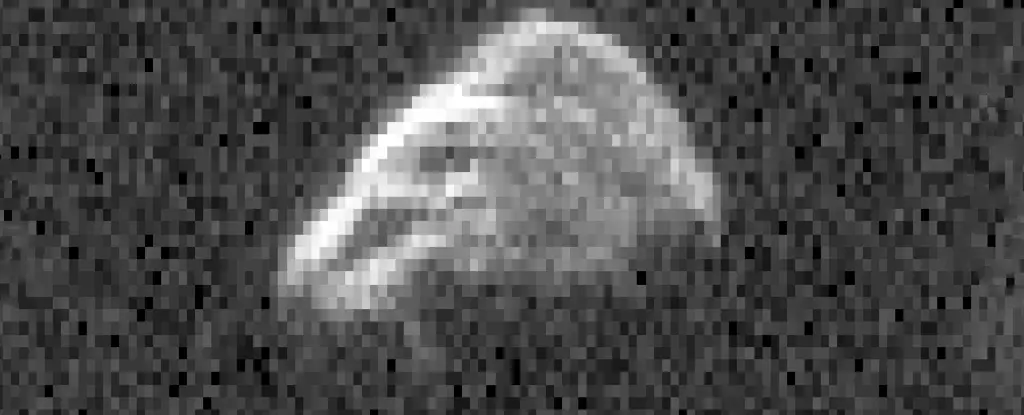Last week, Earth experienced a unique event where two large asteroids, 2024 MK and 2011 UL21, passed by within a close range. While these asteroids did not pose a direct threat to our planet, they provided NASA with an opportunity to capture radar images for further study. This event sheds light on the properties of rocks near Earth, which can help in devising strategies to potentially mitigate the impact of future asteroids that may pose a threat to our planet.
In Earth’s vicinity, the Solar System is mostly empty, but not entirely devoid of celestial bodies. The occasional comet or asteroid passes through, following its orbit around the Sun. While most of these objects are not a concern, anything that comes within a certain distance of Earth or appears sufficiently bright is classified as potentially hazardous. The reason for this classification is that unforeseen events could alter the path of these objects, putting them on a collision course with Earth. While such occurrences are not highly probable, they are not entirely impossible either.
Both 2024 MK and 2011 UL21 fell within the potentially hazardous category. Fortunately, during their recent flybys, no unexpected incidents diverted their paths towards Earth. 2011 UL21 passed by Earth on June 27 at a distance of 6.6 million kilometers, approximately 17 times the distance between Earth and the Moon. Subsequently, on June 29, 2024 MK made its appearance, flying by at a minimum distance of 295,000 kilometers, or about three-quarters of the distance between Earth and the Moon.
Capturing detailed images of asteroids, even when they are relatively close, presents significant challenges due to their small size and limited brightness. NASA employs a large radar telescope to emit radio waves into space, which allows scientists to construct images based on the return signal. In the case of 2024 MK, which had a closer approach than usual, more detailed images were obtained using two telescopes – one for transmission and the other for reception. These images revealed not only the asteroid’s shape but also its surface features such as bumps, divots, boulders, and ridges. By examining these images, scientists were able to determine that 2024 MK will safely remain at a distance from Earth for the foreseeable future.
Astronomer Lance Benner of NASA’s Jet Propulsion Laboratory emphasized the significance of this opportunity in investigating the physical properties of a near-Earth asteroid. On the other hand, 2011 UL21, despite being at a greater distance, did not yield detailed images. Nonetheless, astronomers discovered a small moonlet orbiting the 1.5-kilometer-wide asteroid at a distance of around 3 kilometers.
The presence of moonlets or binary systems accompanying large asteroids is becoming more common due to advancements in imaging technology. These discoveries, such as the moonlet accompanying 2011 UL21 and the binary nature of asteroid Dinkinesh, provide valuable insights into the formation and evolution of such objects. By studying the relative positions, orbits, masses, and densities of binary asteroids, scientists can gain crucial information about their origins. This information not only contributes to planetary defense strategies but also enhances our understanding of the Solar System’s development over time.
Lance Benner notes that approximately two-thirds of asteroids of this size are binary systems, highlighting the significance of these discoveries in shaping our knowledge of celestial bodies. Moreover, the discovery of binary asteroids adds a charming element to our exploration of the cosmos, highlighting the beauty and complexity of the universe.
The recent asteroid flybys and subsequent radar imaging have provided valuable insights into the properties and characteristics of near-Earth asteroids. These events not only enhance our understanding of celestial objects but also underscore the importance of continued research and monitoring to safeguard our planet against potential cosmic threats.


Leave a Reply